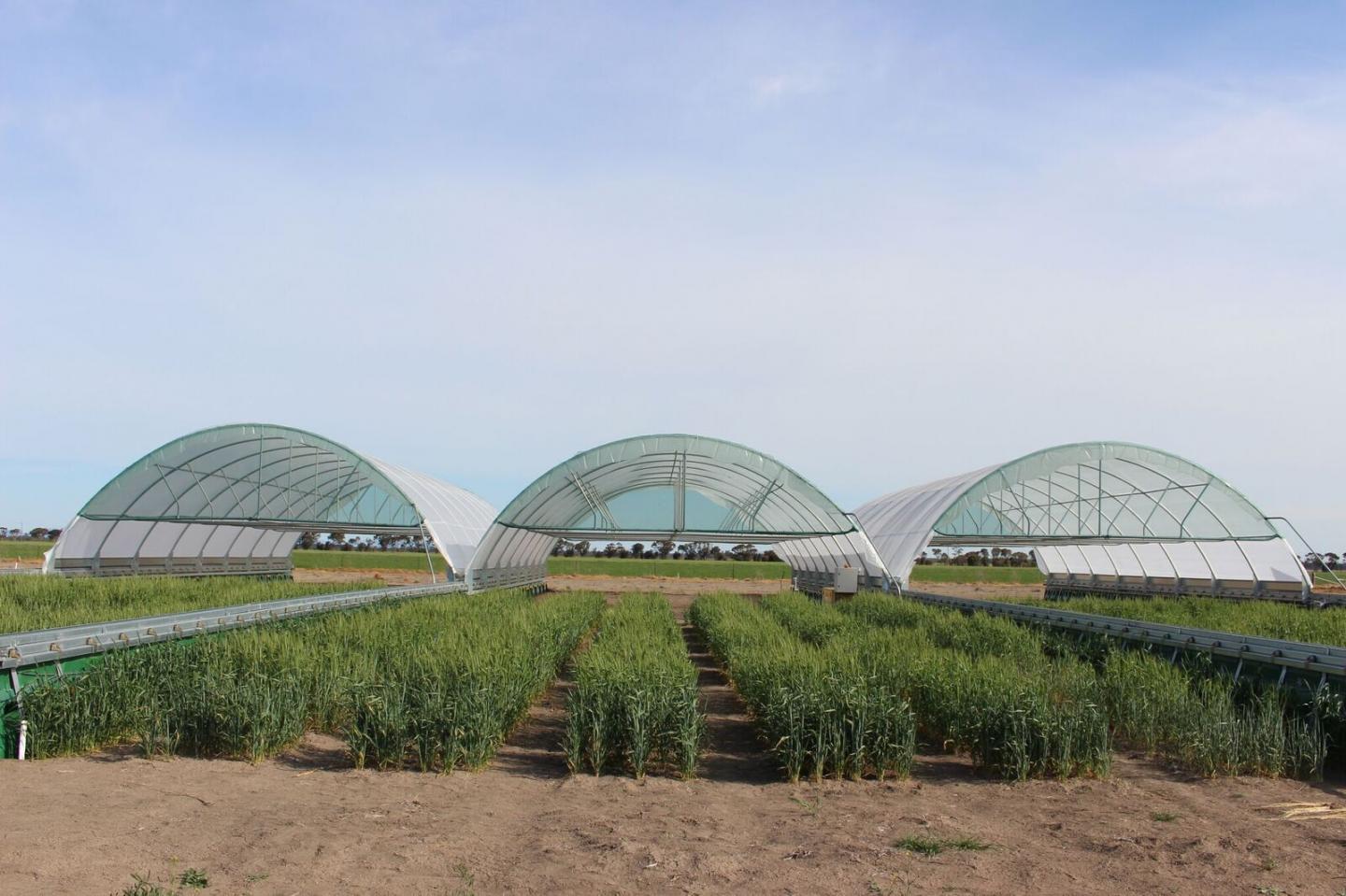
Credit: Photo credit Surya Kant
In many parts of the world, lack of sufficient water makes it difficult – or impossible – to grow crops. Even in areas with enough water for farming, droughts can drastically lower the yield and quality of crops.
One way to grow crops in dry and drought-prone regions is to breed crop varieties that are better able to tolerate water stress. These crops can expand available arable land and increase food production.
Plant breeders and geneticists are continuously developing new crop varieties. But field-testing these new crop varieties to test whether they can actually tolerate water stress is challenging. Part of the challenge is that it is difficult to predict the timing and amount of rainfall, which can complicate experiments in the field.
So researchers turn to rainout shelters. These are structures designed to exclude rainfall from specific areas on agricultural fields. This allows experimentally-controlled water stress to be applied to the crops being grown in those areas.
In a new study, researchers from Agriculture Victoria in Australia describe a fully-automated, portable, and energy-independent rainout shelter. This new design will allow researchers to more effectively field test crop varieties for their tolerances to water stress.
"Developing tools to enable precise testing under natural field conditions is key for breeding water stress-tolerant crops," says Surya Kant, the lead author of the study. Field testing new crop varieties is vital. Experiments under more controlled conditions – such as in greenhouses – cannot always replicate the variable conditions found outdoors.
"There are always variations between field and greenhouse experiments," says Kant. "That is especially the case for drought tolerance research."
During field studies researchers often have to account for various soil types. In contrast, greenhouses often use premade potting mixes or a single kind of soil. There are also differences in plant density, competition with weeds, insects, pests and diseases. All of these differences add up and "results from greenhouse experiments can potentially be unreproducible in the field," says Kant.
The rainout shelters designed by Kant and his colleagues are built using steel arch frames and polyethylene covering. "This lightweight, robust design allows the structures to be portable," says Kant. "It also means that the shelters maintain durability in all weather conditions, especially high winds."
The rainout shelters are mounted on plastic road barriers. These barriers can be filled with water to act as foundations. They can be emptied for maximum portability when the shelters need to be moved.
"Most rainout shelters run on rails that are fixed to the ground, and are therefore non-portable," says Kant. "In contrast, our rainout shelters are portable. They can be relocated to another research station to allow for crop rotation and experimental site changes."
Availability of electric power supply is another issue for researchers using rainout shelters. This is especially the case when experimental sites are located in remote areas. Kant and his colleagues incorporated a portable solar power system in their design to ensure that all power is generated onsite. Independent power generation can minimize potential failures due to issues with existing power infrastructure.
The new rainout shelters also have other customized features, such as rain sensors and surveillance cameras. The rain sensors automatically deploy the shelters in the event of rain, such that no rainfall event is missed accidentally. The surveillance cameras allow researchers to monitor their experiments remotely.
The unique features on these rainout shelters can expand their use into more remote areas. This will potentially allow researchers to test crops for drought-tolerance and growth in previously unusable land.
Read more about these rainout shelters in Crop Science.
###
Media Contact
Susan Fisk
[email protected]
608-273-8091
@ASA_CSSA_SSSA
http://www.agronomy.org
############
Story Source: Materials provided by Scienmag





